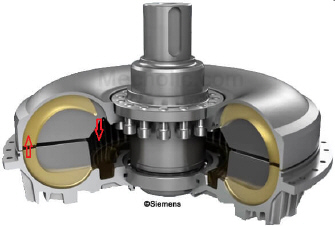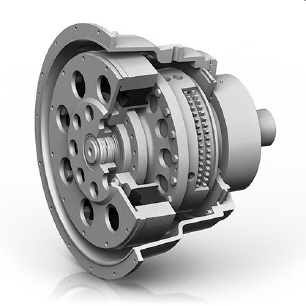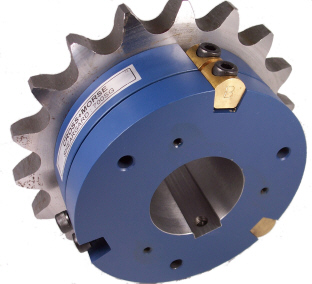True/False
Indicate whether the
statement is true or false.
|
|
|
1.
|
In many modern units, the clutch and brake have been combined into a single
apparatus.
|
|
|
2.
|
There are three basic application groupings for overrunning clutches:
overrunning, indexing, and backstopping.
|
Multiple Choice
Identify the
choice that best completes the statement or answers the question.
|
|
|
3.
|
This is a  a. | Fluid Clutch | c. | Pneumatic Friction Clutch | b. | Torque Limiting
Clutch | d. | Electrical
Clutch |
|
|
|
4.
|
This is a  a. | Fluid Clutch | c. | Pneumatic Friction Clutch | b. | Torque Limiting
Clutch | d. | Electrical
Clutch |
|
|
|
5.
|
This is a  a. | Fluid Clutch | c. | Pneumatic Friction Clutch | b. | Torque Limiting
Clutch | d. | Electrical
Clutch |
|
|
|
6.
|
This is a  a. | Fluid Clutch | c. | Pneumatic Friction Clutch | b. | Torque Limiting
Clutch | d. | Electrical
Clutch |
|
Completion
Complete each
statement.
|
|
|
7.
|
Clutches, brakes, and backstops are mechanical or electrical-mechanical devices
that control energy transfer and _____________ of rotating shafts on power transmission
equipment.
|
|
|
8.
|
A major characteristic of a _________ is to connect two shafts rotating at
different speeds and to engage them smoothly until the speeds are uniform.
|
|
|
9.
|
Clutches and _______ are often used in tension-control systems where strip or
web-fed products are being wound.
|
|
|
10.
|
____________ backstops can be considered a category of their own.
|
|
|
11.
|
A _____________ is a mechanical clutch device that allows rotation in a single
direction only and is used as a safety mechanism.
|
|
|
12.
|
Backstops for light to moderate loads can be mounted internally within the
_________ on the back end of the input shaft.
|
|
|
13.
|
A ____________ is a backstop that is used on an incline conveyer application to
prevent reversal and unloading of the belt when the system is stopped.
|
Matching
|
|
|
a. | Electrical Clutches and Brakes | e. | Fluid Clutches | b. | Torque Limiting
Clutches | f. | Friction Clutches
and Breaks | c. | Positive Mechanical Clutches | g. | Overrunning Clutches | d. | Pneumatic Friction
Clutch Brakes |
|
|
|
14.
|
Use air pressure to actuate the friction discs of the clutch/break.
|
|
|
15.
|
The primary function is to allow rotation in a single direction only to prevent
reverse rotation.
|
|
|
16.
|
There are two basic forms, radial and axial and they rely on frictional forces
to function.
|
|
|
17.
|
Used as overload protection devices in mechanical power transmission
systems.
|
|
|
18.
|
Main purposes include: soft start, delayed engagement, reduced load starting,
and overload protection.
|
|
|
19.
|
Eddy current, magnet particle, and elctrically activated friction disc
clutch/breaks are all mechanisms that use electricity to activate the unit or provide the holding
power through magnetic fields.
|
|
|
20.
|
Depend on interlocking mechanical parts to transfer power from one shaft to
another.
|
|
|
a. | Ramp Clutch | c. | Sprag Clutches | b. | Pawl and Ratchet Clutch | d. | Wrap Spring
Clutch |
|
|
|
21.
|
When reverse torque is applied to either hub, the spring tightens on the hub
surface and prevents reversed turning.
|
|
|
22.
|
Incorporate specifically shaped locking cams positioned between steel rings
that allow only single direction rotation.
|
|
|
23.
|
Uses spring rollers or balls that rotate on hardened steel ramps. The
rotational torque produces a wedging action to prevent reverse rotation.
|
|
|
24.
|
The special shape of the ratchet teeth will allow the pawl to catch on the
backside of the teeth if it attemps to reverse direction.
|